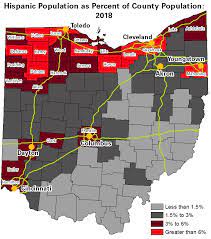
This New York Times article by Adam Liptak discusses the recent decision by the Supreme Court to cancel a scheduled hearing of complaints against Title 42. Title 42 is a COVID-19-era measure put in place by the Trump administration in March of 2020. The initial goal of Title 42 was to prevent foreign spread of COVID by allowing border officials to easily remove anyone attempting to illegally cross the border. These migrants would either be immediately shunted to Mexico or returned to their native country via plane, something dangerous when many people originally fled their country due to unsafe or dangerous conditions. The Supreme Court Justices had scheduled a hearing of complaints against Title 42 for March 1st, but cancelled the appointment on February 16th. This cancellation is due to a recent announcement by Solicitor General Elizabeth B. Prelogar, a Biden administration lawyer, that Title 42 would be dismissed—along with the public health crisis—in May.
The article is largely neutral, but takes a slight stance against Title 42. While Liptak does mention that 19 “mostly Republican-led states” (Liptak, 2023) had blocked the removal of the title in December he goes into little detail on this or any current response from these states. The article discusses the unfairness of Title 42, mentioning that many of the people expelled had been asylum seekers, and that the title made crossing the border and seeking asylum unfairly difficult.In general the article discusses largely pro-immigrant and border crossing sentiments with little mention of anyone who might dissent the dissolution of Title 42.
There is very little quantitative data provided. The article mentions that “about 2.5 million” (Liptak, 2023) migrants have been expelled by use of the title, but this number is neither sourced nor expounded upon. Other than this only general terms are used in association with migrants attempting to cross the border. The article mentions concerns that illegal border crossings will spike after the dissolution of the title, but no quantitative data is provided that might back this up. While the 2.5 million statistic is helpful to demonstrate just how much Title 42 is put into use it’s a very general statistic. I would have liked to see some further elaboration on the number of people turned away, possibly compared to pre-Title 42 policy.
The article includes quotes from a brief filed by Prelogar regarding Title 42 as well as a hyperlink to that brief and to the court’s announcement that the hearing was cancelled. Liptak mentions that humanitarian organizations have spoken up against the title, but this is not elaborated upon, and neither are any organizations specifically mentioned. The article also includes a quote from lawyers speaking for the 19 states who managed to keep Title 42 instated in December expressing concerns over a possible uptick in illegal border crossings following the title’s removal, as well as a brief quote from Justice Gorsuch that he believes the court is in the right to allow Title 42 to be removed. These different points of view, while helpful in understanding the process behind the court’s cancellation of the hearing, are very individual points of view. Actually hearing from one of the humanitarian organizations previously mentioned about the title could have added another dimension regarding public sentiment on the title.
I found this article informative and relatively unbiased, but was frustrated by the lack of quantitative evidence and Liptak’s habit of announcing a demographic’s sentiment without backing it up. All qualitative evidence was very individualized which, on the one hand, is understandable due to the main subjects the article discussed. On the other hand, it was frustrating to hear about such a broad-spanning measure with no sense of the wider public sentiment for or against it. While perspectives for and against the measure were mentioned neither were covered in much detail, leading to a seemingly vague reception of both the measure and the cancellation of the hearing.
Source
Liptak, Adam. “Supreme Court Cancels Arguments in Title 42 Immigration Case.” The New York Times. The New York Times, February 16, 2023. https://www.nytimes.com/2023/02/16/us/politics/supreme-court-title-42-immigration.html.
